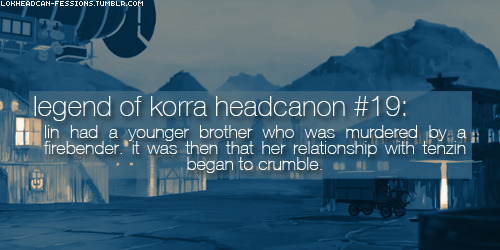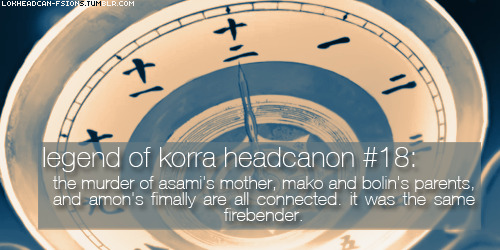Text
What is a Shipping Container?
What is a Shipping Container?
Shipping Containers are also known as conex boxes, and are the cargo containers that allow goods to be stored for transport in trucks, trains and boats, making intermodal transport possible. They are typically used to transport heavy materials or palletized goods.
youtube
Shipping containers are also referred to as, ISO container, conex box, railroad container, intermodal container and certain truck trailers. This industry term refers to the International Standards Organization (ISO), the largest developer of international standards and the organization that developed the standard dimension specifications for steel shipping containers used worldwide.
The design of the ISO standard containers allows for intermodal shipping, which is the movement of containers from one mode of transport to another, like ship, rail, or truck, without the need of having to load and unload, and reload its contents.
Shipping Containers are used to protect transported cargo from shock and bad weather conditions, as well as keep storage products intact. They were first used in the 1950s and were initially developed for the purpose of commercial shipping container transport.
Depending on the type of product that is going to be sent, the Shipping Container can vary in dimension, structure, material, etc. Characteristics of these shipping containers were later standardized, something that expedited transport without the need to load and unload the merchandise along the way.
There are different types of Shipping Containers for different types of transportation:
Common Types of Shipping Containers
Shipping Containers are another name for the conex boxes most used on the market. Shipping Containers are typically suitable for any type of dry cargo: pallets, boxes, bags, machines, furniture, etc.
Common types include:
- Dry Storage Container
- Refrigerated Container
- Open top container
- Flat rack container
- Open Side Container
- Tanks Container
- Ventilated containers
- Dry Storage Shipping Container
Dry Storage Shipping Containers are your typical standard shipping containers. Basic construction is made of steel, and hermetically sealed, without cooling or ventilation. Sizes typically come in 20 ‘, 40’ or 40 ‘High Cube. The High Cube category facilitates an increase of 13% of the internal cubic capacity and can handle the heaviest loads (coal, tobacco, etc.)
Refrigerated Shipping Container
Reefer Shipping Containers provide a temperature controlled environment. They have a power supply that connects to energy sources during transport. This allows the products to be transported at a constant temperature throughout the journey. They have the possibility to lower temperature from -18 ° to 30 °. There are 20 and 40 foot models, in addition to the High Cube.
This type of Shipping Container is especially recommended for transporting food or products that need a low storage temperature.
Open Top Shipping Container
Open Top Shipping Container have the same measurements as the standard containers, but are open at the top because they have a removable canvas roof. These containers facilitate the transport of bulky loads.
Flat Rack Shipping Container
Flat Rack Shipping Containers are like the Open Top, but also lack side walls and even, in some cases, front and rear walls. They are used for atypical loads and pay supplements in the same way as Open Top.
Open Side Shipping Container
Open Side Shipping Containers have the same measurements as standard containers; 20 or 40 feet, with the difference that they have a side opening. This allows for transporting very long merchandise, whose dimensions prevent it from being loaded by the back door.
Tank Shipping Container
Tank Shipping Containers are used for the liquid transport and made to carry dangerous as toxic, corrosive, highly combustible chemicals, as well as oil, milk, beers, wine, mineral water, etc. They have the same dimensions as a Dry Shipping Containers, but their structure is different, as they include a polyethylene tank inside.
Ventilated Shipping Containers
Ventilated Shipping Containers are made for transporting products such as coffee or cocoa beans, which must be ventilated in transit; sometimes these units are called “coffee containers”.
Shipping Container Door Diagram and Troubleshooting
Doors
Two door leaves are fabricated from two vertical rolled hollow sections and 2 horizontal c section members. The frame is infilled with corrugated steel paneling.
These are normally attached to the rear corner posts each with four drop forged steel hinge blades. The blades allow 270 degree opening which allow the doors to swing back against the container side wall.
(Cargo may shift during transit. Look at the container to make sure that the doors are aligned and level, both top and bottom. In cases where the container frame is racked and the door gear will not operate correctly.)
Lockbox
The lock box is a steel box welded to the right hand door which overlaps a staple welded to the left hand door. A padlock, normally type CISA type 285 66 can then be attached inside the lock box through the staple and is then protected from direct attack, hindering attempts to gain entry to the container.
Lockrods, cam keepers, handles
Each door is fitted with 2-4 vertical lock rods to enable opening, closing and locking of the doors.
At the end of each lock rod (top and bottom) is a cam welded in place which engages with knuckles, also known as cam keepers.
The action of engaging the cams to the keepers forms an anti-racking function.
(In certain cases, often unfortunately too many, contents of the shipping container may have shifted, or containers even dropped, causing shipping container doors and lockrods to warp)
The door handle rotates the lockbar to initiates the door opening process by forcing the cams out of their keepers. Each door handle has a door locking handle retainer that slides over the door handle when in locked position.
Rubber gaskets
Rubber gaskets are fitted to the container doors during the manufacturing process and prevent water ingress.
(Door gaskets are designed to present two or more fins against the structure or adjacent door. These are generally flexible but when the gasket is damaged, they may become hard or blocked thus jamming the door closed, or preventing it being closed.)
ISO markings and CSC plate
ISO markings and a consolidated data plate allow worldwide intermodal transport when left in place and updated as necessary.
Hinge pins
Of course for a door to work, you need hinges.
(In certain cases when doors are difficult to open, hinge pins and blade are seized due to corrosion.)
Find Shipping Container Doors and Parts Here
Choosing the Right Company for Buying a Shipping Container
When doing research in finding the right Shipping Container, follow some of these tips:
Research Online
Choose which companies have a good track record of excellence and reputation. Read reviews and what other customers have to say.
Check for Availability
If you are shipping from various locations, check for availability if containers can be delivered to your required areas.
Check for Best Pricing
If money matters, you can find used container resellers online that might be able to offer half the price on used containers.
Check for Good Customer Service
If you plan to order often, you might want to check for good customer service. Ask potential container companies a question through email or their online customer service. See how fast they respond.
Check for Warranty
Check with companies to see if they offer any warranties or buy back or trade in plans.
There are millions of Shipping Containers in use around the world, and a lucky few get a second life as repurposed shipping container structures. While they look a bit plain and boxy to the untrained eye, shipping containers play a critical role in our lives, whether embarking on ocean crossings to deliver the goods we use every day or venturing into a second life as a container structure.
Here are Some Fascinating Facts about Shipping Containers
- Shipping Containers can be safely stacked nine-high.
- Well-maintained Shipping Containers hold 759, of their original value for 25+ years.
- There are over 37 million Shipping Containers in use around the world.
- A Shipping Container floor can hold up 55,000 lb. of goods without warping.
- Shipping Container flooring is made of 1-1/8” marine grade plywood.
- Most Shipping Containers are 20 feet or 40-feet long.
- Shipping Containers are made of 16-gauge corten steel.
- Common container modifications include: personnel doors, windows flooring, shelving, work stations, insulation, climate control & even restrooms.
Fun Ways to Use Shipping Containers
Shipping Containers are not just used for cargo these days. There are many innovative and imaginative uses you may like to consider.
Here are few ideas of how shipping containers have been used for modern, cost effective buildings.
Homes
The trend to build cost-effective homes from recycled shipping containers started in USA and has reached Australia.
Art Galleries
Architect, Tomokaza Hayakawa designed an art gallery in Japan using two shipping containers stacked on each other.
Drive-Thru Coffee
Starbucks in Washington have used four old shipping containers to create an architect designed drive-thru store.
Cafes
A cafe in Footscray (Melbourne) called Rudimentary has been built using three 40-foot shipping containers.
Polar Stations
India has built a Polar Station in Antarctica using 134 shipping containers. They cover three floors and are well insulated for the weather conditions.
A well-maintained Shipping Container can hold 75% of their original value for 25+ years. Every day, container ships transport goods all over the world on the international seas.
Shipping Container Opening and Closing Tool
A Shipping Container (also known as Intermodal Container, ISO Container,Railroad Container, and certain Truck Trailers) is a large standardized shipping container, designed and built for intermodal freight transport. Shipping Containers can be used across different modes of transport. They can go from ship to rail to truck, without unloading and reloading their cargo.
The metal doors on the shipping containers on these containers are standardized. Shipping Containers use the same type and style of doors and locking bars, which our tool can be used.
Lengths are as follows: 20′, 40′, 45′, 48′, 50′, 53′. All these containers are globally used to transport cargo. The 53′ length is now, the new the standard length.
Here are some likely reasons a Shipping Container door will not open or close. Visit https://www.shippingcontainertool.com/what-is-a-shipping-container/ to find out how to overcome some of these issues.
Doors and lockrods may warp or container frame is racked so that the door gear will not operate correctly. This may be caused by cargo shifting during transit. Look at the container to make sure that the doors are aligned and level, both top and bottom.
The hinge pins and blade are seized due to corrosion.
The door gasket has been damaged and is preventing opening. Door gaskets are designed to present two or more fins against the structure or adjacent door. These are generally flexible but when the gasket is damaged, they may become hard or blocked thus jamming the door closed, or preventing it being closed.
Water has become trapped between frozen shipping container doors, particularly relevant to refrigerated cargoes, or containers with moisture releasing cargoes in cold weather.
0 notes
Photo

Headcanon 23:
Though Korra doesn’t know it at the time of her leaving her mother Senna was pregnant and didn’t get a chance to tell her. She’ll later get an unexpected message that she has a new little sister and as they get older they’ll have a Nani/Lilo relationship.
submitted by anonymous
13 notes
·
View notes
Photo

Headcanon 22:
Jinora has always been a romantic. She has a crush that leads to infatuation with Mako. At the age of sixteen she finally confesses, but Mako turns her down. Heavily influenced by the romantic stories she reads, Jinora attempt suicide. Korra finds her and heals her, but Jinora believes that Mako rejected her due to lingering feelings for Korra, and, in a fit of rage, Jinora kills Korra, leading the Republic reeling over whether the benders are too dangerous.
submitted by anonymous
3 notes
·
View notes
Photo

Headcanon 21:
Aang was secretly devastated when Kya and Bumi weren’t born to be airbenders. Even though he loved all of his children, he was hoping that he would have more airbending children. He died with the hope that Tenzin would have many airbending children.
submitted by night-monster
7 notes
·
View notes
Photo

Headcanon 20:
Korra, Mako, Bolin and Asami are all chilling in a room, Tenzin asks Korra to come with him immediately and she learns that Katara passed away. Korra runs out of the room and the air temple leaving Mako and everyone else in confusion. Korra breaks down alone.
submitted by anonymous
17 notes
·
View notes
Photo

Headcanon 19:
Lin had a younger brother who was murdered by a firebender. It was then that her relationship with Tenzin began to crumble.
submitted by anonymous
The nameless firebender strikes again!
10 notes
·
View notes
Photo

Headcanon 18:
The murder of Asami’s mother, Mako and Bolin’s parents, and Amon’s fimally are all connected. It was the same firebender.
submitted by anonymous
15 notes
·
View notes
Photo

Headcanon 17:
Asami will learn that Mako and Korra kissed outside of the pro-bending arena, and will have a huge mental breakdown and join the equalists. She’ll train personally with Amon to become a chi-blocking prodigy, and subsequently take Mako down when he least expects it.
submitted by discotrauma
3 notes
·
View notes
Photo

Headcanon 16:
Mako subconsciously feels that he was responsible for his parents’ deaths and thinks that he needs to make amends for it. In some way, he feels that he doesn’t deserve happiness.
submitted by anonymous
MAKO BBY NO! YOU DESERVE SO MUCH HAPPINESS!
9 notes
·
View notes
Photo

Headcanon 15:
Mako didn’t realize his feelings for Korra until Asami tried to get him to wear the new scarf she had gotten him. He never wanted to take off his scarf for anyone, yet, he remembered, when searching for Bolin, he had given his scarf to Korra without a second thought.
35 notes
·
View notes
Photo

Headcanon 14:
After Korra joined the Fire Ferrets, but before she developed feelings for Mako, she asked him if he would teach her the basics of pro-bending, one on one. She wanted to prove to him that she was serious about being on the team because she knew Mako would take practice seriously, whereas Bolin might not. Mako was skeptical of her request, but complied. The two of them practiced every night for a week, and it was during that time that Korra began to develop feelings for Mako. However, her mind was too focused on proving herself to him to notice and it wasn’t until they searched for Bolin together that she realized how she felt.
5 notes
·
View notes
Photo

Headcanon 13:
Like airbending, Korra has had an impossible time conneting with the Spirit World. In fact, the only times she has ever been able to (sort of) connect with it were the both times she was rendered unconscious at the hands of Amon and his chi-blockers.
5 notes
·
View notes
Photo

Headcanon 12:
When he was younger, Bumi felt insecure about being a non-bender despite being the son of the avatar. His Uncle Sokka convinced him that it was perfectly fine to be a non-bender, and even trained him in the art of swordsmanship.
submitted by ricekrispies
12 notes
·
View notes
Photo

Headcanon 11:
Mako dabbled in prostitution when he was younger and he needed to care for his brother while they lived on the streets.
submitted by anonymous
Don’t mind me. I’m just tearbending in a corner.
12 notes
·
View notes
Photo

Headcanon 10:
When Aang almost died in The Last Airbender, Amon was chosen to be the new Avatar. Katara then healed him with her magic water, stripping Amon of all his avatar powers. Except the power to take away a person’s bending.
submitted by my-saviour-my-sin
17 notes
·
View notes
Photo

Headcanon 9:
Mako and Bolin are very distant relatives of Zuko, related to him through his mother’s side of the family. They are so distant, however, that they don’t even know they’re related to him.
13 notes
·
View notes
Photo

Headcanon 8:
While the avatar is the only person who can master all four elements, it is possible for someone to learn two bending elements. They’re referred to has dual benders, and are rare, but becoming more prevalent.
submitted by theixwyn
20 notes
·
View notes